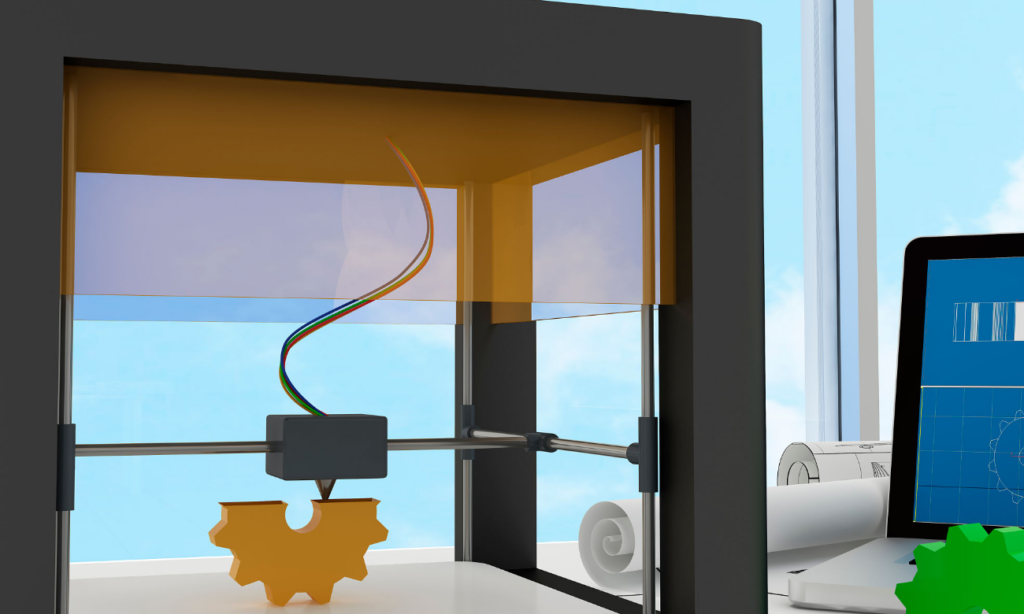Our innovative On-Demand 3D Printed Spare Parts Services
Introduction
3D Printed Spare Parts Services are revolutionizing the way businesses and consumers source replacement components for equipment, machinery, and consumer products. By leveraging additive manufacturing, providers can produce complex geometries on demand without the need for traditional tooling or inventory storage. In this article, we explore how 3D Printed Spare Parts Services streamline supply chains, reduce downtime, and open new avenues for customization, all while maintaining high quality and cost efficiency.

The Benefits of On-Demand Production
Utilizing 3D Printed Spare Parts Services offers significant advantages over conventional manufacturing. Lead times shrink from weeks to days or even hours allowing organizations to respond rapidly to urgent repair needs. Elimination of minimum order quantities ensures that a single component can be produced cost-effectively. Furthermore, digital part libraries enable instantaneous access to design files, empowering businesses to manage critical stock virtually and freeing up warehouse space.
How 3D Printed Spare Parts Services Work
Typically, a customer submits a part design file or reverse-engineering specifications to a service provider. The 3D Printed Spare Parts Services team reviews the geometry, selects appropriate materials such as engineering-grade polymers or metal alloys and prepares the model for printing. After build orientation and support structures are finalized in specialized software, the part is fabricated layer by layer on industrial printers. Post-processing steps, including heat treatment, surface finishing, or machining, ensure the final component meets required tolerances and performance criteria.
Customization and Flexibility
One of the hallmarks of 3D Printed Spare Parts Services is the ability to tailor parts to specific needs. Whether reinforcing stress points, integrating new mounting features, or optimizing for lighter weight, the design can be iterated digitally before production. This flexibility not only enhances performance but also extends the lifespan of equipment. Clients benefit from rapid prototyping capabilities that test fit and function in real-world conditions, ensuring that the final spare part aligns perfectly with existing assemblies.
Industry Applications
Across industries from aerospace to automotive, medical devices to consumer electronics 3D Printed Spare Parts Services are making an impact. Airlines deploy on-site printing units to produce cabin components and brackets in remote locations. Automotive shops source obsolete tooling and trim pieces for vintage models. Hospitals fabricate custom prosthetic attachments and surgical guides. Even electronics repair centers utilize these services to replace tiny connectors or housings that are no longer in production, minimizing electronic waste.
Quality Assurance and Certification

Stringent quality control is essential when delivering critical components. Providers of 3D Printed Spare Parts Services implement rigorous inspection protocols, including in-process monitoring and final dimensional verification using coordinate measuring machines (CMM). Material traceability is maintained through batch-level certifications and mechanical testing. For sectors with regulatory oversight such as medical or aerospace service bureaus adhere to ISO and AS9100 standards, ensuring each part complies with industry-specific requirements.
Cost Efficiency Considerations
While initial unit costs of 3D-printed parts may appear higher than mass-produced items, the total cost of ownership is often lower. By removing tooling expenses, minimizing inventory carrying costs, and reducing obsolescence risk, 3D Printed Spare Parts Services deliver economic value across the product lifecycle. Businesses can convert fixed costs into variable costs, aligning expenditures with actual demand. This financial model supports lean operations and frees up capital for innovation rather than warehousing.
Rapid Prototyping Versus On-Demand Manufacturing
3D Printed Spare Parts Services excel in both prototyping and end-use production. Rapid prototyping allows designers to validate form, fit, and function before committing to expensive injection molds. Once a prototype is approved, the same digital assets can be used for on-demand manufacturing of spare parts. This seamless transition from design validation to final deployment accelerates product development cycles and ensures that aftermarket support remains agile and integrated.
Technology and Software Ecosystem
The backbone of 3D Printed Spare Parts Services is an advanced software ecosystem. From CAD modeling to build preparation, specialized applications handle lattice structures, topology optimization, and automated support generation. Cloud-based platforms facilitate collaboration between engineers, service providers, and quality teams. Machine learning algorithms predict optimal print parameters based on historical data, improving first-pass success rates and reducing material waste.
Integration with Inventory Management
Integrating 3D Printed Spare Parts Services into enterprise resource planning (ERP) systems transforms how spare parts are managed. Digital inventories track part versions and material specifications, triggering print orders automatically when stock falls below threshold levels. This integration ensures that critical spares are always available without overstocking. Real-time visibility into part demand and consumption patterns enables data-driven decisions that optimize both production scheduling and inventory turnover.
Challenges and Solutions
Adopting 3D Printed Spare Parts Services involves overcoming material limitations, mechanical performance concerns, and certification hurdles. Service providers invest in R&D to qualify new polymers and metal powders that match traditional part properties. Hybrid manufacturing approaches combining additive layers with CNC machining address tight tolerance requirements. Comprehensive testing and simulation ensure that parts meet or exceed the functional demands of their intended applications, mitigating risk and building trust with end users.
Scaling and Growth Strategies
As demand for on-demand components rises, 3D Printed Spare Parts Services expand capacity through additional print farms and decentralized manufacturing nodes. Strategic partnerships with logistics companies enable rapid global shipping, reducing lead times in distant markets. Investment in modular production cells allows flexible scaling based on client needs. Alliances with local service bureaus create a distributed network that balances volume and speed while maintaining consistent quality standards.
Market Opportunities and Investment
The market for 3D Printed Spare Parts Services continues to grow as industries recognize the value of localized, demand-driven manufacturing. Venture capital and angel investing are fueling startups that specialize in niche applications, such as robotic end-of-arm tooling or heritage locomotive parts. Companies that build robust digital ecosystems encompassing design, production, and logistics—are positioned to capture significant market share by reducing barriers to entry for organizations previously dependent on long lead-time supply chains.
Future Trends
Looking ahead, 3D Printed Spare Parts Services will incorporate greater automation, from robotic post-processing to AI-driven part selection. Multi-material printing platforms will produce assemblies with embedded sensors or conductive traces, facilitating smart spares capable of predictive maintenance. Blockchain-based part authentication will ensure provenance and prevent counterfeit components from entering critical systems. As sustainability takes center stage, providers will adopt eco-friendly powders and recyclable polymers that minimize environmental impact across the part lifecycle.
Best Practices for Implementation
Organizations seeking to leverage 3D Printed Spare Parts Services should start by identifying high-impact pilot projects such as legacy equipment with frequent failures or remote assets with excessive downtime costs. Engage cross-functional teams, including maintenance, engineering, and procurement, to define technical requirements and performance metrics. Establish clear contractual terms with service providers, covering intellectual property, lead times, and quality standards. Monitor pilot outcomes closely and scale successful implementations across the enterprise.
Conclusion
On-demand 3D Printed Spare Parts Services are reshaping supply chain dynamics by delivering customized, high-quality components precisely when and where they are needed. By embracing this technology, businesses reduce inventory burdens, accelerate maintenance workflows, and unlock new avenues for product innovation. With continuous advancements in materials, software, and distributed manufacturing networks, 3D Printed Spare Parts Services stand at the forefront of a more resilient, responsive industrial ecosystem ensuring operational continuity and driving competitive advantage.